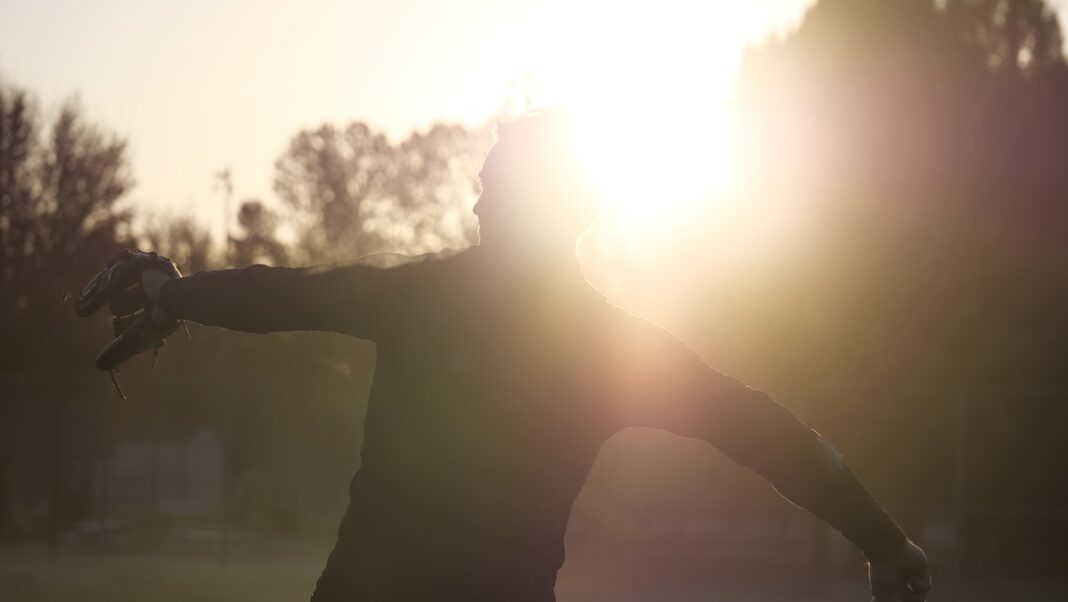Home Blog Blog Article Can the starting pitcher be revived?
It was once commonplace in Major League Baseball for a starting pitcher to go seven innings and throw 100+ pitches. Turning on a Sunday Night game, you would expect to watch two workhorse aces duel for eight innings before relinquishing the ball to the bullpen. Nowadays, it’s a rarity to see starters surpass 100 pitches in a game, with fewer eclipsing the 200-inning mark. On a perhaps somewhat related note, MLB has also experienced a spike in pitcher injuries, namely UCL tears and subsequent Tommy John surgeries.
The arm injury paradigm has been a hot topic for more than a year now. Many are quick to point to the year-over-year rise in average fastball velocity, suggesting that an increased intent to throw hard is the primary culprit behind the rise in injuries. Oddly enough, these folks likely aren’t entirely wrong—throwing is innately stressful and throwing hard requires an immense production and transfer of force. If you want to be successful in today’s Major League Baseball, throwing hard is non-negotiable.
However, just because higher pitch speeds correlate with higher injury risk does not mean we should forgo that risk entirely. Instead, we need to better understand it, optimize it, and implement training methods that keep pitchers on the field while still allowing them to throw harder.
Aside from injury, often lost in conversations about the “good ole days” of starting pitchers working deep into the night is the impact on their effectiveness the next time out. On those same Sunday Night Baseball broadcasts, you might hear the announcers mention the starters’ heroic complete game shutout five days ago and to be on the lookout for a “hangover outing.” In a FanGraphs Community Research article, Paul Kasinski explores this idea and had similar findings to what we intuitively know—there is a residual effect of longer outings impacting future ones.
This should not discourage pitchers from wanting to rack up innings, the ones that know how to prepare for the season and navigate the days in between outings collect a handsome reward. The goal, instead, is to understand the factors that contribute to peak performance, understand how to maintain it through a season, and recreate it across other athletes. Decrease luck. Eliminate guesswork.
This is where PULSE creates space in the discourse.
Allow Me to (Re)Introduce Myself
You’ve probably seen the pictures and videos on Instagram and Twitter of MLB pitchers with black straps around their upper forearms—that’s PULSE. PULSE is Driveline’s own wearable throwing workload monitor designed to give athletes and coaches unparalleled insight into what stress a pitcher is experiencing.
This idea of workload management is not unique only to baseball, nor to Driveline. It is a concept as old as training. As training enters the modern age, GPS monitors used to track the distance covered and speed reached by athletes have gained prominence in other sports, such as football, basketball, and soccer. Across the college and professional ranks, teams have recognized the importance of tracking workload and fatigue, using technology to make smarter decisions about how athletes train and recover.
The difference in baseball, however, is that injuries are overwhelmingly concentrated on a single joint: the elbow. While other athletes deal with general wear and tear across multiple areas of the body, pitchers face a more localized problem. Nearly every throw made applies stress to the UCL, which is now the most talked about ligament in professional sports. Understanding how stress accumulates is critical, yet most throwing programs still rely on vague estimates and incomplete data to gauge workload. If the goal is to keep pitchers healthy while allowing them to throw harder, more precision is needed.
Traditional approaches to tracking throwing volume leave a large majority of throws unrecorded. If a pitcher throws a 25-pitch bullpen, that is typically understood to be a “high effort” day with 25 high intent throws. It’s easy to look at that number and assume that it represents the entire workload for that session. But what about the plyos to warm up, catch play to get the feel for the baseball, and throws on the mound before the bullpen starts?
The bullpen itself is not the only throwing done, but those throws historically are the only ones tracked. Without a system like PULSE, all the additional throws are invisible. A day that reads “Bullpen – 25 Pitches” can have five times the number of throws listed, not accounting for the intensity of those throws.
For the days between mound sessions, most training plans assume that pitchers execute their prescribed workout exactly as intended. However, that is rarely the case. The hidden stressors accumulate and, if they go unchecked, unaccounted for fatigue can lead to a decline in performance or even injury. The difference between feeling your best and needing a day often lies in the unseen reps that happen outside of a bullpen or game appearance.
PULSE eliminates the guesswork. Rather than relying on estimates or assumptions, it provides a complete, objective record of how much a pitcher is throwing, the total load they are under, and how their workload fluctuates from day to day. This allows pitchers and coaches to construct more precise training plans and more informed adjustments throughout the season.
